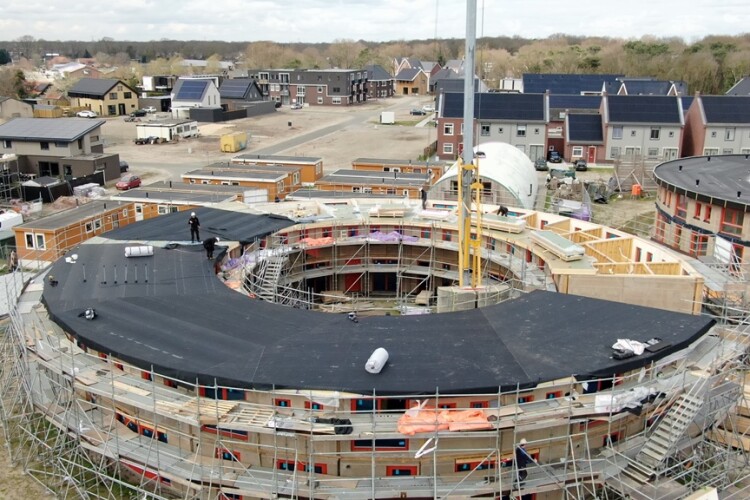Sustainability is always a work in progress. Specifiers know to select products that last longer, extending the service life of the building, but they do not always consider what happens to construction materials at the end of their service life.
Can they be recycled or re-used? How can they be given a second life? Who will be responsible for ensuring that reincarnation?
It is those questions that lie at the heart of circular sustainability. It is a simple concept: rather than considering the environmental credentials of a material solely in terms of how green it is at the time of use, circularity requires a cradle-to-cradle approach to selecting materials that have reduced embedded carbon emissions, extended performance and the ability to be returned to the value chain at the end of their initial service life.
A Dutch government initiative enables developers or building owners to recoup up to 12% of the cost of both building materials and labour, based on circularity criteria. To enable the client to qualify for this financial support, the product supplier must promise to take back the materials at the end of their service life and recycle them or reprocess them so that they can be re-used.
The scheme is structured to incentivise the whole supply chain to get on board with the concept of circularity. For the developer or building owner, it not only provides potentially substantial cost savings on the final account but also delivers an incentive to become actively involved in the specification strategy, which could deliver quality and service life benefits, along with improved sustainability credentials.
For the contractor, the incentive scheme enables due diligence in dealings with the supply chain and puts the onus on the supplier to facilitate circularity.

And for building products suppliers, there is an incentive to step up efforts to achieve cradle-to-cradle lifecycles during the product development process.
Reducing raw material consumption is integral to improved circularity and, while the UK does not have a government-led scheme to drive this approach, we can still learn from the best practice shown by the Netherlands.
For building product suppliers during the product development process, and for construction companies during construction method development and procurement, there must be a whole system approach to implementing a circularity strategy. Building materials can only be re-used or recycled cost-effectively if they can be removed cleanly from the building at the end of their service life. Consequently, ancillary materials and installation techniques should also be factored into specification choices in order to reduce waste and optimise circularity potential.
For example, in the specification of an EPDM roofing membrane using induction equipment ensures that the membrane can be removed cleanly from the roof at the end of its service life. The EPDM material can be fully separated from the insulation without contamination from adhesives or primers, maximising the amount of product that can be reprocessed to recover and reuse the component compounds.
This example highlights the role of decision-making by the construction contractor in educating clients and delivering the circularity strategy the architect and developer want to achieve. It also demonstrates the importance of a collaborative approach, whereby contractors and building products suppliers work together to agree the best solution for the project’s sustainability goals.
The benefits of circularity may not be felt for a while – when it comes to EPDM roofing membranes, for example, there is an anticipated service life of 50 years – but making the right choice matters now.
Got a story? Email news@theconstructionindex.co.uk



